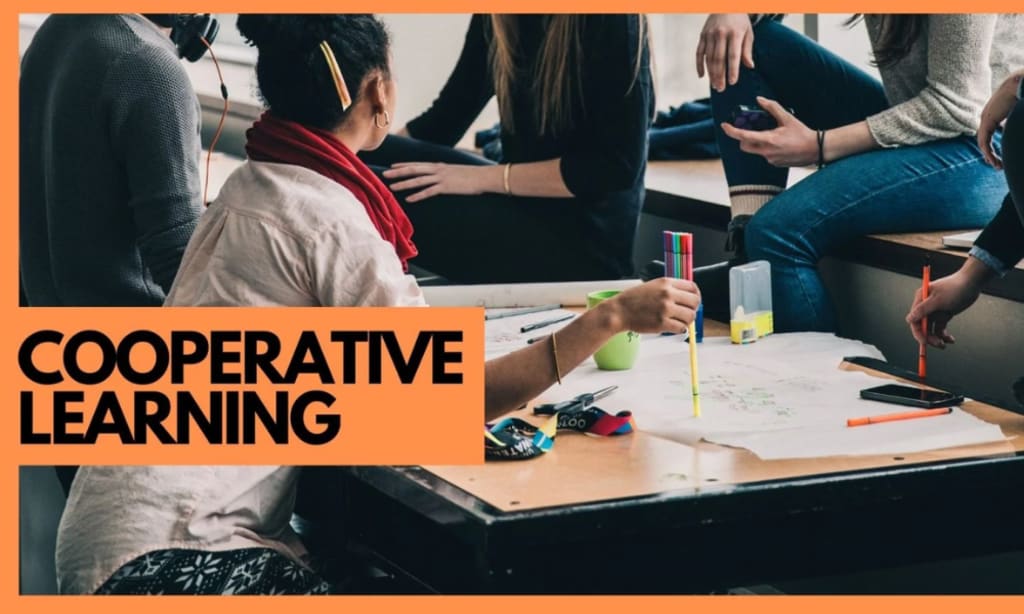Cooperative Learning: A Path to Academic and Social Success
Cooperative Learning

Cooperative learning is an instructional approach where students work together in small groups to achieve a common goal. This method is not only effective for enhancing academic performance but also for developing social and interpersonal skills. At Ecole Globale Schools, we believe in the power of cooperative learning to transform the educational experience. This article delves into the principles, benefits, and strategies of cooperative learning, providing valuable insights for parents and students.
For more info... https://www.ecoleglobale.com/blog/cooperative-learning/
What is Cooperative Learning?
Cooperative learning involves students working collaboratively in small groups to accomplish shared learning goals. Unlike traditional individualistic learning, cooperative learning emphasizes group interactions and mutual support.
Key Principles:
Positive Interdependence: Each group member's success is linked to the success of the entire group. This principle fosters a sense of shared responsibility and unity, encouraging students to support one another in achieving the group's objectives.
Individual Accountability: Every student is responsible for their contribution to the group's work. This ensures that each member is actively engaged and that the group's success is dependent on the participation of all members.
Equal Participation: All students have equal opportunities to contribute to the task. This principle prevents any single student from dominating the group and ensures that everyone has a voice.
Simultaneous Interaction: Multiple students engage in learning activities at the same time. This increases the overall engagement and participation of the class, as more students are actively involved in the learning process.
Benefits of Cooperative Learning
Cooperative learning offers numerous advantages that extend beyond academic achievement.
Academic Gains:
Enhanced Understanding: Students often develop a deeper understanding of the material through peer explanations and discussions. Explaining concepts to peers requires students to process information more deeply, leading to better comprehension and retention.
Higher Retention: Learning through teaching others helps students retain information better. When students teach their peers, they reinforce their own learning and are more likely to remember the material.
Social and Emotional Development:
Improved Communication: Working in groups enhances students' verbal and non-verbal communication skills. They learn to articulate their thoughts clearly and listen to others, fostering effective communication skills that are essential in all aspects of life.
Increased Self-Esteem: Participating in group activities can boost students' confidence and self-worth. Being an integral part of a group's success can enhance a student's self-esteem and encourage them to take on new challenges.
Better Relationships: Cooperative learning fosters a sense of community and belonging among students. Working together on common goals helps students build positive relationships with their peers, which can improve the overall classroom environment.
Effective Strategies for Cooperative Learning
Implementing cooperative learning effectively requires careful planning and a variety of strategies to keep students engaged and motivated.
Think-Pair-Share:
Description: Students think about a question individually, discuss their thoughts with a partner, and then share their conclusions with the class. This simple strategy encourages individual reflection followed by collaborative discussion.
Benefits: Encourages participation from all students, including those who may be shy or hesitant to speak in a large group. It ensures that every student has a chance to voice their thoughts and learn from their peers.
Jigsaw Method:
Description: Each student in a group is assigned a different segment of a topic to learn and then teach to their group members. This method divides the workload and encourages each student to become an expert in their assigned segment.
Benefits: Promotes responsibility and ensures that all students contribute to the group's learning. It also fosters deeper understanding as students need to comprehend and teach their segment effectively.
Group Investigation:
Description: Students work in small groups to investigate a topic, gather information, and present their findings to the class. This method involves research, collaboration, and presentation skills.
Benefits: Enhances research skills and fosters teamwork and collaboration. It allows students to explore topics in depth and develop critical thinking skills.
Round Robin Brainstorming:
Description: Students take turns sharing ideas in their groups, ensuring that each member participates. This method encourages active participation and idea generation.
Benefits: Generates a wide range of ideas and encourages active listening and respect for others' contributions. It helps students develop their brainstorming and creative thinking skills.
Implementing Cooperative Learning in Schools
To successfully integrate cooperative learning into the classroom, teachers need to create a supportive environment and provide clear instructions and expectations.
Steps for Implementation:
Form Groups: Create diverse groups with varying abilities to encourage peer learning. This diversity ensures that students can learn from each other's strengths and support each other's weaknesses.
Set Clear Goals: Define the learning objectives and outcomes for each group activity. Clear goals help students understand the purpose of the activity and stay focused on achieving them.
Assign Roles: Give each student a specific role to ensure accountability and equal participation. Roles such as leader, recorder, presenter, and timekeeper can help structure the group's work and ensure everyone is involved.
Monitor Progress: Observe groups, provide feedback, and offer assistance as needed. Regular monitoring helps keep students on track and allows teachers to address any issues that arise.
Evaluate Outcomes: Assess both the group’s work and individual contributions to ensure fair evaluation. Evaluation should consider both the quality of the group's final product and the contributions of individual members.
Challenges and Solutions
While cooperative learning offers many benefits, it can also present challenges that need to be addressed.
Common Challenges:
Unequal Participation: Some students may dominate while others may not contribute as much. This can lead to an imbalance in the group's work and learning.
Group Conflicts: Disagreements can arise, disrupting the learning process. Conflicts can stem from differences in opinions, work styles, or levels of commitment.
Time Management: Group activities can sometimes take longer than planned. Managing time effectively can be challenging, especially if students are not accustomed to working in groups.
Solutions:
Structured Activities: Clearly define roles and responsibilities to ensure balanced participation. Structured activities can help prevent dominance by a few students and encourage equal contribution from all members.
Conflict Resolution Training: Teach students how to manage conflicts and work collaboratively. Providing students with conflict resolution skills can help them navigate disagreements and maintain a positive group dynamic.
Time Limits: Set specific time frames for group activities to keep them focused and efficient. Clear time limits can help students stay on task and complete their work within the allotted time.
Conclusion
Cooperative learning is a powerful educational strategy that not only enhances academic performance but also develops essential social and interpersonal skills. By working together, students learn to communicate effectively, solve problems, and build positive relationships. At Ecole Globale Schools, we are committed to incorporating cooperative learning into our curriculum to provide a holistic and enriching educational experience for our students.
About the Creator
Enjoyed the story? Support the Creator.
Subscribe for free to receive all their stories in your feed. You could also pledge your support or give them a one-off tip, letting them know you appreciate their work.





Comments
There are no comments for this story
Be the first to respond and start the conversation.